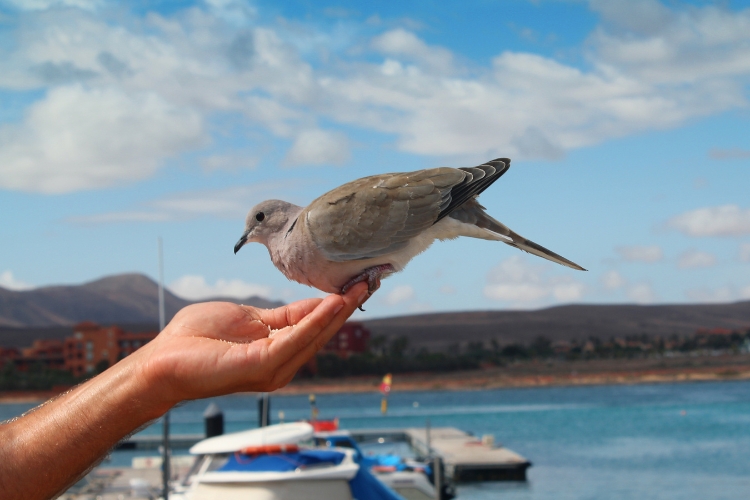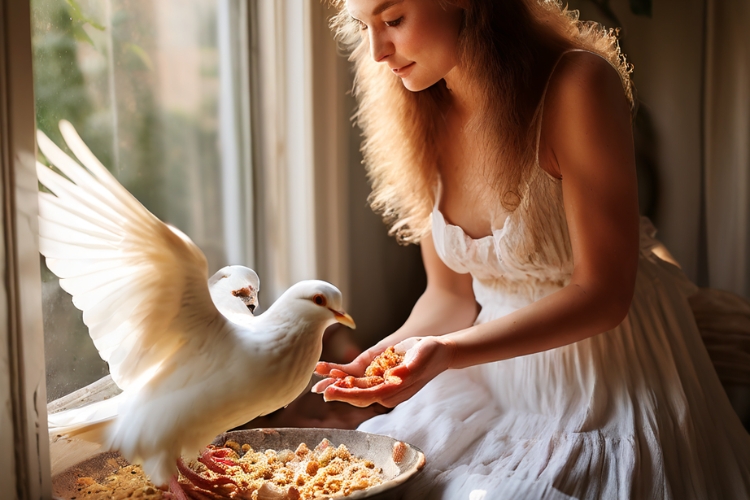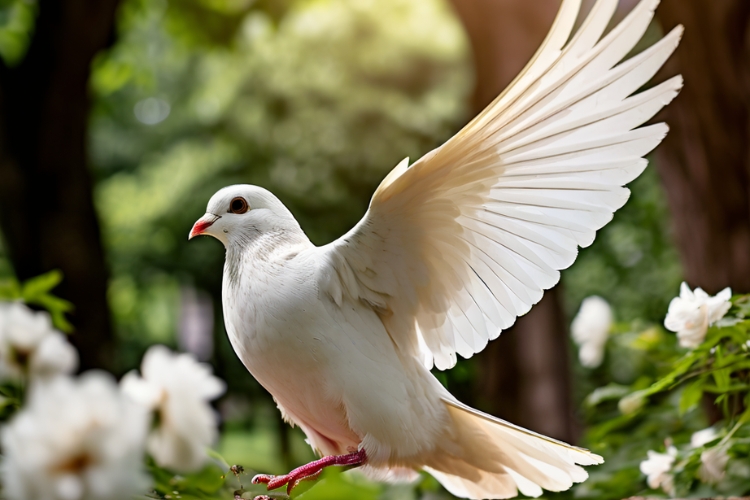Doves can make wonderful pets with their soft coos and graceful beauty. However, many newly acquired doves tend to be quite timid and fearful around their new owners. With time, patience and the proper technique though, even the shyest doves can become tame, trusting companions.
The key to taming doves is gaining their confidence slowly without forcing them. Moving at their pace and letting them adjust on their own terms is crucial.
As you repeatedly show them safety and reward their small steps, you’ll build a strong mutual bond of trust and affection. They eventually become comfortable being fed, stepping up onto your hand, and even accepting petting once they associate you with all good things.
In this blog post guide, we’ll discuss about the taming and positively reinforcing your new doves to transition them into delightful, people-friendly pets.
Preparing their Environment
Initially, house your shy doves in a small cage in a quiet room with minimal foot traffic and some soothing background music. Position their enclosure near eye level and pull up a comfortable chair to spend time sitting quietly nearby.
Provide essentials like food and water as well as perches, hiding spots and nesting materials. Hang spray millet inside for tempting treat rewards later on. Let them settle into their new surroundings for the first few days without attempting physical interaction.
Gaining Initial Trust
After a short settling-in period, you can begin hand-feeding treats to start forming positive associations between you and food.
Choose small, nutritious bite-sized goodies that aren’t part of their regular diet to keep novelty and interest high. Things like sliced grapes, peas, corn kernels, safflower or sunflower seeds work great. Offer them from your hand through the bars, palm flat, finger tips curled under so they can’t accidentally nip you.
When a brave dove ventures over to eat, stay still and let them finish the treat without sudden movements before offering another. Repeat this process in short sessions multiple times a day, advancing your hand slightly closer to their enclosure each time as they gain confidence.
If any appear frightened at first, back off and try again later – don’t chase them to force interaction. Allow them to make the choice to approach you as you reinforce with tasty incentives. In time, even the wariest doves will learn to trust the treat giver’s hand!
Getting Them To Step Up
Once your new doves start eagerly taking treats from your resting hand inside their cage, the next goal is getting them to step onto your finger and palm.
Introduce a wooden perch or cotton rope perch into their habitat for this step. Gently wiggle the perch to imitate a landing spot or secure branch. When they gain interest, wiggle your finger above it with a treat resting on your fingernail to entice them closer. The moment one steps onto the perch or your hand, offer bountiful praise and several more goodies!
Repeat this perch step-up training in gradually longer sessions, advancing to lifting your hand slightly once aboard but keeping it low enough they can drop off easily if desired. If any seem nervous, don’t force or rush things – rebuild their confidence first with more hand feeding if needed. Setting them back up will reinforce the positive experience.
When they appear fully comfortable being handled this way with the cage door closed, you can try the next step of taking them out.
First Flights Outside the Cage
When your doves eagerly step onto your finger or hand through the open cage door, remain inside the room for their first brief flights, keeping windows and doors closed. Offer a treat once they’re aboard your hand, then slowly lift them out and pause.
If they seem relaxed exploring your hand, slowly move to your shoulder or knee before setting them back into their cage after just 30 seconds or so on the first few trips. Immediately reward with treats upon their return while verbally praising and stroking their back gently if they allow it.
Gradually work up from brief sessions on your hand/shoulder to longer flights flying laps around the room and landing back on your outstretched hand or head. Bring them back to the cage periodically for food rewards and water breaks.
If any seem fearful or hesitant at any point, simply return them swiftly but gently to their cage and try again next session. Routines should stay positive, never forced. Regressing your expectations sometimes is necessary to rebuild recently shy birds’ courage.
Transitioning to Full Freedom
Over two to three weeks, slowly increase time spent out of cage as confidence grows. Supervise fully at first during these lengthening periods. Bring their cage into the dove-proofed room during these initial lengths of free flight time.
Make sure to offer treats both spontaneously and upon their voluntary return to you or their cage. Vary locations of landings and durations out before reinforcing with food and affection.
Once they exhibit complete ease and enjoyment with extensive supervised fly time, you can try short stints of unsupervised freedom. Again start small with 5-10 minutes, provide entertainment like a bird-safe houseplant, open food dish or mirror. Build up durations gradually over subsequent days and weeks.
Eventually your doves will gain the confidence to spend long spans of leisure time at home out of cage, only confining at night or when you’re away. Just be sure to fully dove-proof any rooms they’ll have access to and watch closely for signs of stress at first. Reinforce recall training periodically with treats to make sure they reliably return to you when called.
Bonding Through Positive Reinforcement
The most crucial part of taming shy doves is forming a nurturing bond where they see you as both treat dispenser and protective caretaker. Talk and sing to them frequently in a soothing tone of voice. Never grab them suddenly or chase them, always allow them to approach and retreat on their own terms while building confidence through repetition.
Continue providing favorite treats by hand both spontaneously and after demonstrations of desired behaviors like stepping up or flying over. Gently stroke feathers once they appear fully comfortable eating from your palm or perching in your lap. Introduce head scratches after acclimating to petting.
Set aside at least an hour a day focused solely on positive interaction with your doves. In time, even the shyest will become cheerful companions who can’t wait to flutter over and socialize with their doting owner! Just remember – slow and gentle always wins a dove’s trust and affection.
Conclusion
While new doves often start out quite fearful and hesitant, even the shyest can become friendly and tame over time with enough patience. By preparing a secure environment, letting them adjust at their own pace, and using tasty treats to reward baby steps in the right direction, you’ll soon gain their confidence and form an unbreakable bond.
Within a few weeks of short, positive sessions focused wholly on trust-building, soon your once-timid doves will eagerly seek affection and delight in spending time with their loving caretaker.



